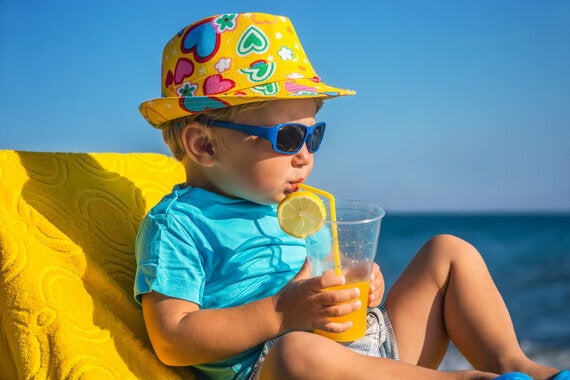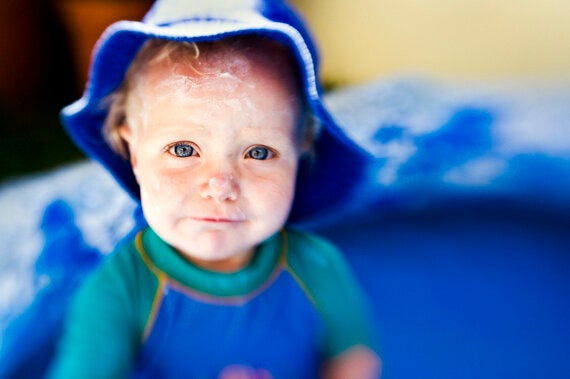Top tips for staying safe in the sun

Summer holidays are special! They are a great chance to spend some quality time with the kids away from the distractions of school and nursery. Sometimes kids play results in unavoidable bumps and scrapes and that is part of growing up. However, having the knowledge to know what to do in a medical emergency can make all the difference in confidently judging when an accident is serious and requires medical intervention. Conversely, knowing when a cuddle and distraction is all that is necessary allows you to relax and enjoy spending time together.
Think ahead:
Dress appropriately for the weather, wear sensible clothes (including hats) and pack a change of clothes for you and your children. Always have water and snacks easily available when out on day trips to ensure your children remain well fed and hydrated. A miserable child can quickly spoil things for everyone!
Pack toilet roll, tissues, hand sanitizer and sun cream; along with a compact, sensible First Aid kit. At the minimum, your First Aid kit should contain; a dressing or triangular bandage to stop bleeding, an instant ice pack to reduce swelling, burn gel, wipes, novelty plasters and bravery stickers are also useful distractions.
Drink!

In hot weather, it is vital to remember to encourage your kids to drink plenty of water and avoid running around in the sun during the heat of the day. Encourage them to take plenty of breaks in the shade and arrange quieter activities between the running around, to avoid heat exhaustion.
Heat exhaustion can come on suddenly and unexpectedly particularly when running around in the sun. They may start feeling sick, dizzy, headachy, and develop stomach ache and a raised temperature. Encourage them to get into the shade or an air-conditioned environment, and rehydrate by taking frequent sips of Dioralyte, an isotonic sports drink or water. If they don't recover extremely quickly and you are concerned, seek medical attention quickly.
Don't burn!
The sun's UV rays can quickly damage children's skin, even on a cloudy day. Babies' and children's skin is more sensitive than adults and extremely vulnerable to burning.

To avoid sunburn:
1.Always ensure children are wearing appropriate sunscreen, apply liberally over their face and body and re-apply every 2-3 hours and more if in water.
2.Take particular care if swimming or boating; as water intensifies the sun's rays
3.Dress children in tightly woven opaque clothes ideally with a sun factor rating
4.Regularly go indoors or move into shade.
5.Avoid being in the sun between 11:00 am and 3:00pm, when the sun's rays are strongest.
6.Wear a hat, ideally with an SPF factor, wide brim and ear cover.
7.Wear sunglasses
8.Protect little ones in the car and buggy too and invest in a high quality sun shade that will protect your child. Avoid leaving your child for any length of time in a car or buggy positioned in direct sunlight.
First Aid for sunburn: Cool the affected area under a tepid shower for at least 10 minutes, or apply repeated cool wet towels for 15 minutes. When completely cooled, apply neat Aloe Vera gel to the affected area, this will soothe, reduce swelling and promote healing. Give the child plenty to drink and Calpol for the pain. Any child who has been sunburnt should be seen by a medical professional
Make the most of the holidays, this time is really precious as they grow up so fast!
It is highly recommended that you attend a practical or online First Aid course to learn how to help in a medical emergency
First Aid for life and onlinefirstaid.com provides this information for guidance and it is not in any way a substitute for medical advice. First Aid for Life is not responsible or liable for any diagnosis made, or actions taken based on this information. The best way to be prepared for action in an emergency is to attend a practical or online First Aid course.
For more information please visit: www.firstaidforlife.org.uk or contact emma@firstaidforlife.org.uk 0208 675 4036 @firstaidforlife